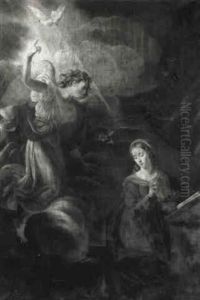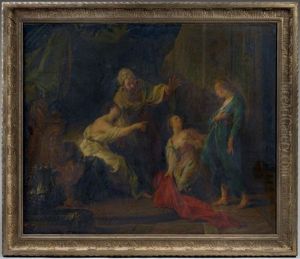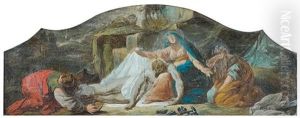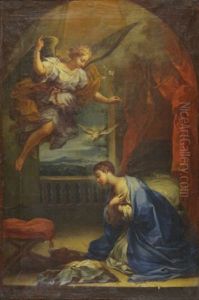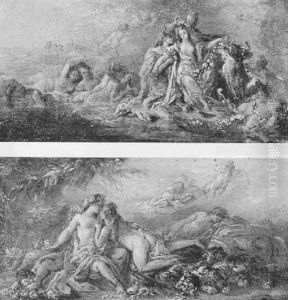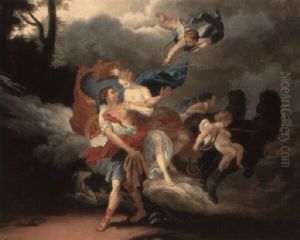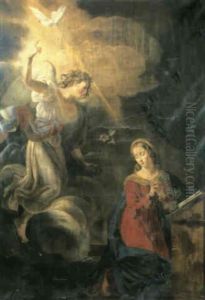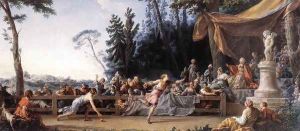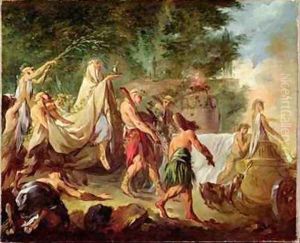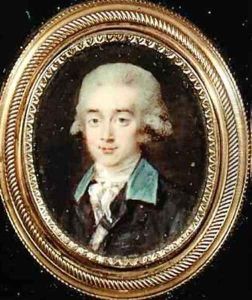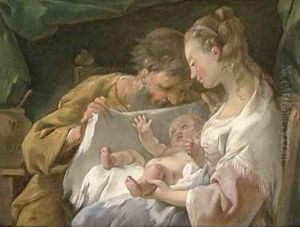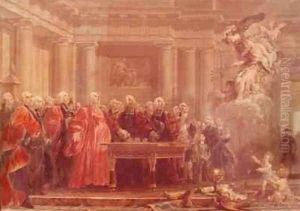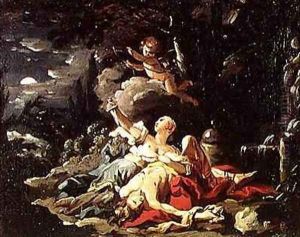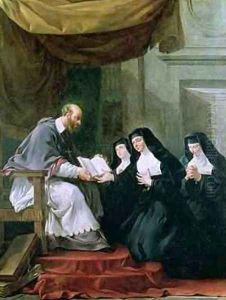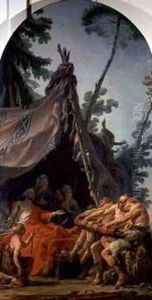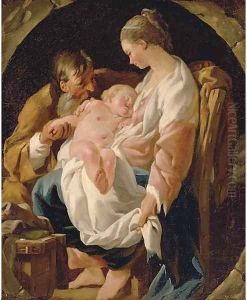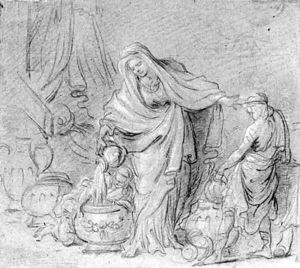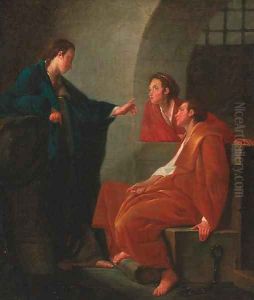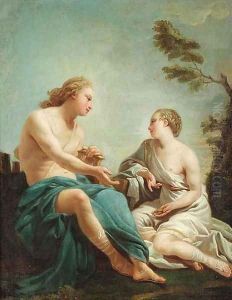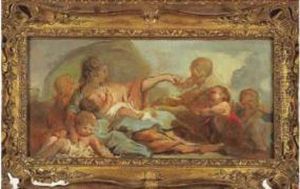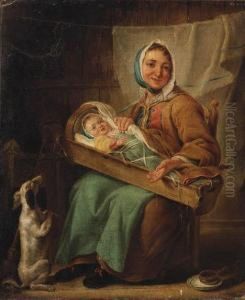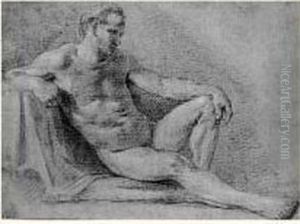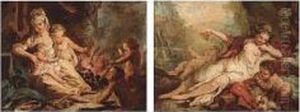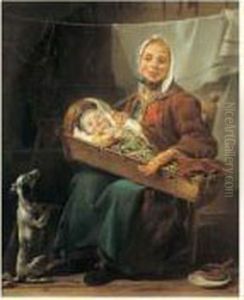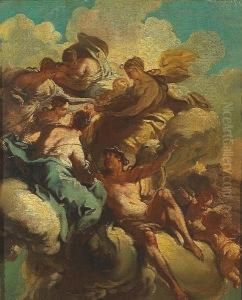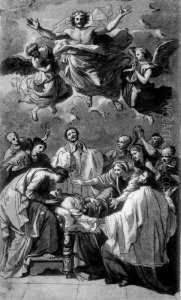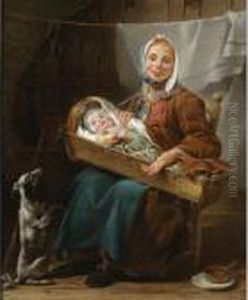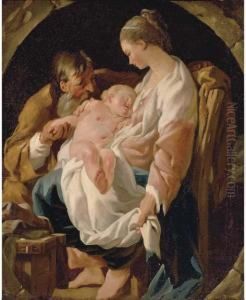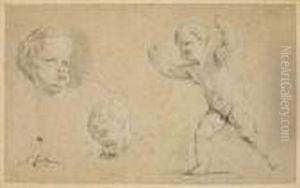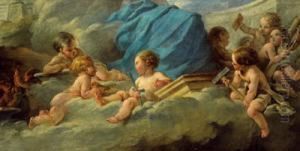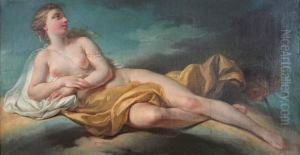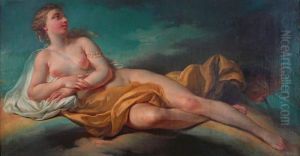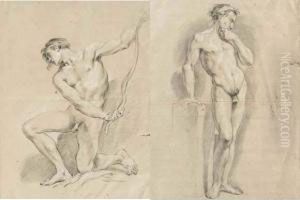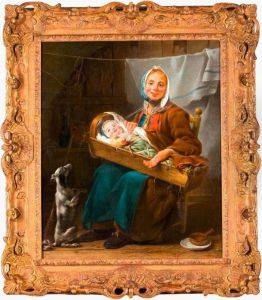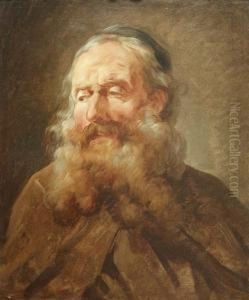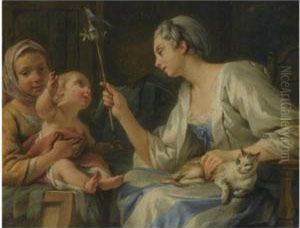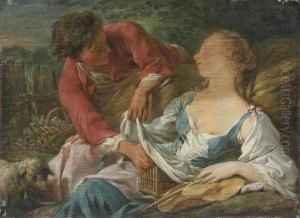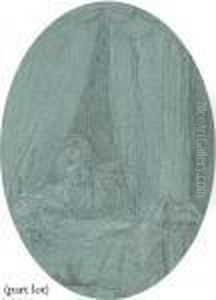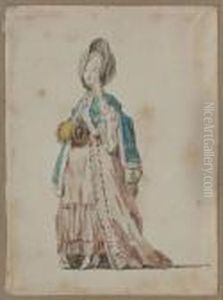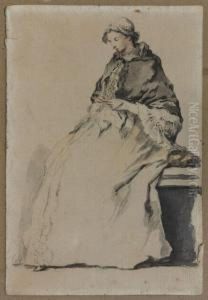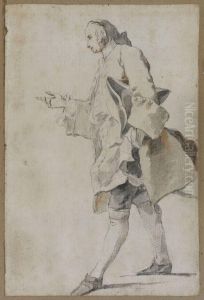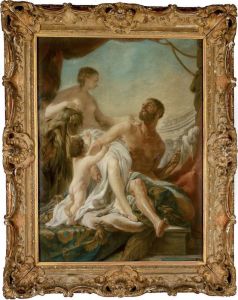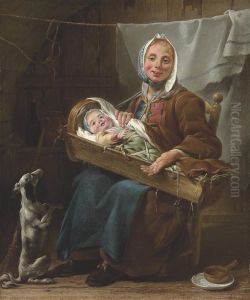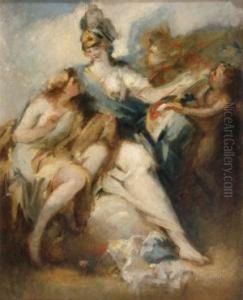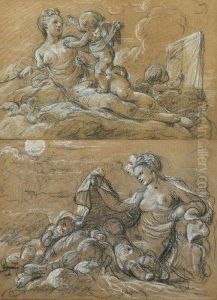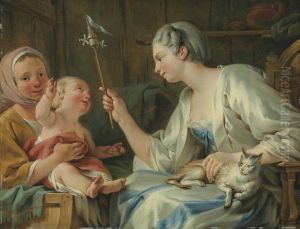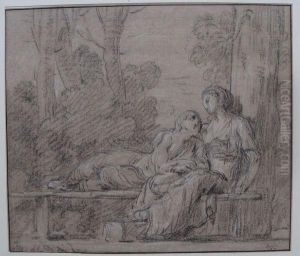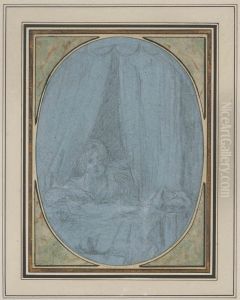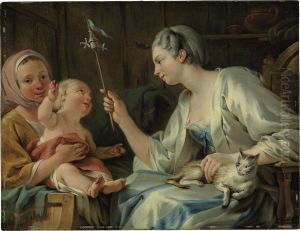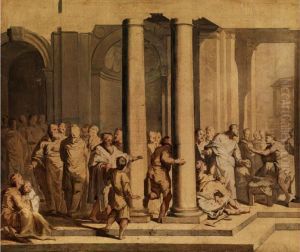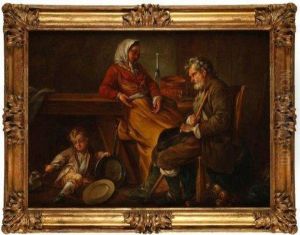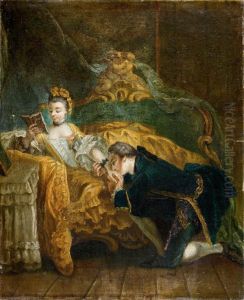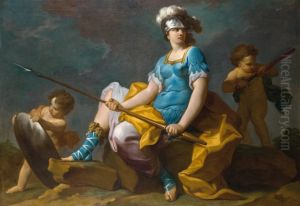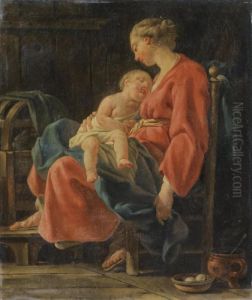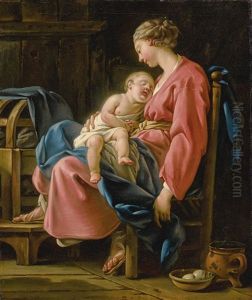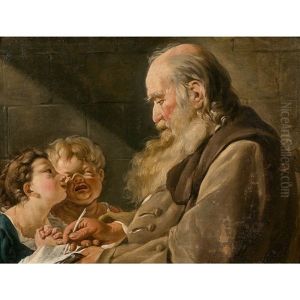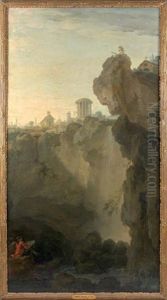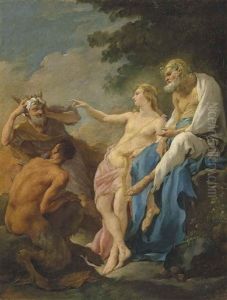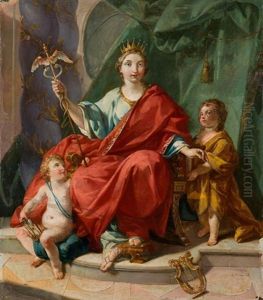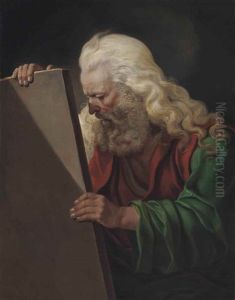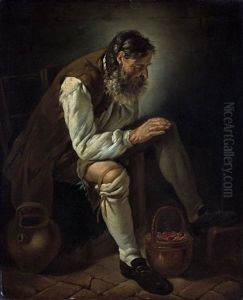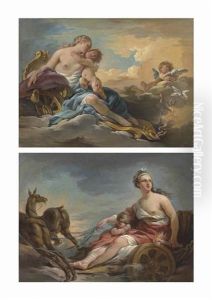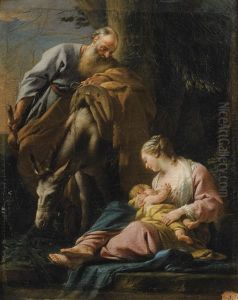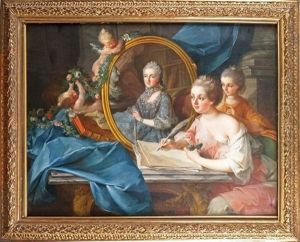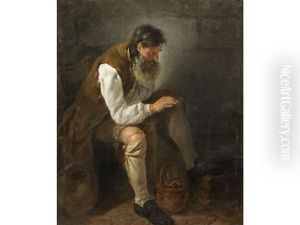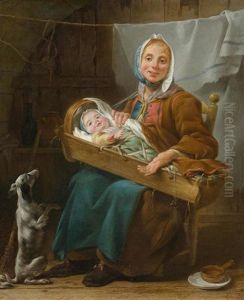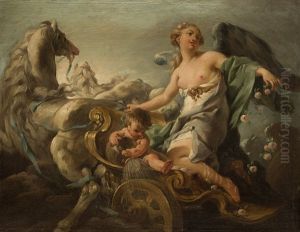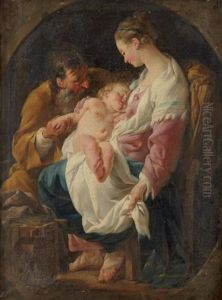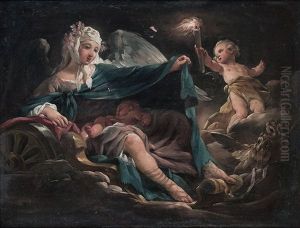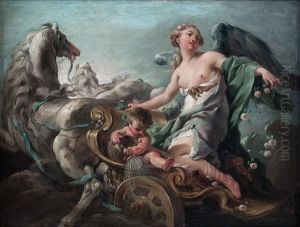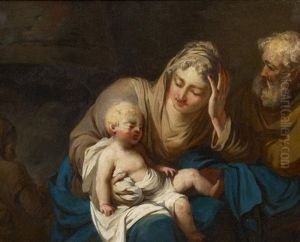Noel Halle Paintings
Noël Hallé was a French painter, draftsman, and printmaker born on September 2, 1711, in Paris, France. He was the son of the landscape painter Claude-Guy Hallé, which provided him with an artistic environment from a very young age. Hallé received his initial training from his father and later attended the French Royal Academy of Painting and Sculpture.
Hallé developed a reputation for his historical paintings and allegorical works. His style was influenced by the Baroque tradition as well as the emerging Rococo movement, which was characterized by lightness, grace, and the use of delicate colors. Hallé's works often included mythological and religious themes, and he was known for his ability to convey complex narratives through his paintings.
In 1736, Hallé won the prestigious Prix de Rome for his painting 'The Repentance of Saint Peter'. This award granted him the opportunity to study at the French Academy in Rome, which was a significant honor for artists of the time and pivotal for their careers. During his stay in Rome, Hallé was exposed to the works of classical antiquity and the Renaissance, which had a lasting impact on his artistic development.
After his return to France, Hallé became a member of the Royal Academy in 1740 and later a professor in 1744. He was appointed as the official painter of the king, Louis XV, and received numerous commissions for religious and historical scenes from various patrons, including the French nobility and the church. Hallé's paintings were celebrated for their clarity of composition and the vividness of their narrative.
Some of Noël Hallé's notable works include 'The Death of Seneca', 'Jupiter and Mercury at Philemon and Baucis', and 'The Contest of Apollo and Marsyas'. His paintings can be found in several prestigious museums, including the Louvre in Paris.
Hallé also contributed to the world of art through his role as an educator. He trained many students who would go on to become prominent artists in their own right. His influence extended beyond his immediate circle, as his works helped to shape the transitional period between the Baroque and Rococo periods in French art.
Noël Hallé passed away on March 5, 1781, in Paris. His legacy endures through his contributions to French art and the lasting beauty of his paintings, which continue to be admired for their elegance and narrative depth.
